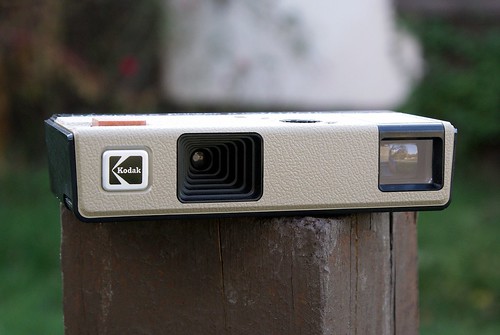Difference between revisions of "Kodak Hawkeye Pocket Instamatic"
m (Smoothed up writing.) |
(link to Kodak Kids Camera, another member of this tangled family) |
||
| Line 12: | Line 12: | ||
It operates without the need for batteries. When purchased new, the camera came packaged with a 12 exposure roll of Kodak Kodacolor II color film, 1 MagiCube, a wrist strap and an extender to raise the flash up higher above the film plane. When first marketed, it retailed for $24.95. | It operates without the need for batteries. When purchased new, the camera came packaged with a 12 exposure roll of Kodak Kodacolor II color film, 1 MagiCube, a wrist strap and an extender to raise the flash up higher above the film plane. When first marketed, it retailed for $24.95. | ||
| − | Other than this model used flashcubes, it is quite similar to the [[Kodak Winner]], [[Kodak Gimini]], [[Kodak Trimlite Instamatic 18]] and [[My First Camera]], all of which employed a flipflash. | + | Other than this model used flashcubes, it is quite similar to the [[Kodak Winner]], [[Kodak Gimini]], [[Kodak Trimlite Instamatic 18]], [[Kodak Kids Camera]] and [[My First Camera]], all of which employed a flipflash. |
<br clear="all"> | <br clear="all"> | ||
Revision as of 11:02, 13 September 2016

|
| Kodak Hawkeye Pocket Instamatic image by Kenneth Dwain Harrelson (Image rights) |
The Hawkeye Pocket Instamatic was a plastic camera which used the 110 cartridge film and was produced from 1973 to 1979. It had a sliding film advance button on the bottom of the camera which was cycled using the operator's thumb. There was a socket on the top of the camera for MagiCubes. The camera measures 4 1/2" wide x 1" tall x 2 1/8" deep. Weight was 3 and 1/2 ounces.
It operates without the need for batteries. When purchased new, the camera came packaged with a 12 exposure roll of Kodak Kodacolor II color film, 1 MagiCube, a wrist strap and an extender to raise the flash up higher above the film plane. When first marketed, it retailed for $24.95.
Other than this model used flashcubes, it is quite similar to the Kodak Winner, Kodak Gimini, Kodak Trimlite Instamatic 18, Kodak Kids Camera and My First Camera, all of which employed a flipflash.